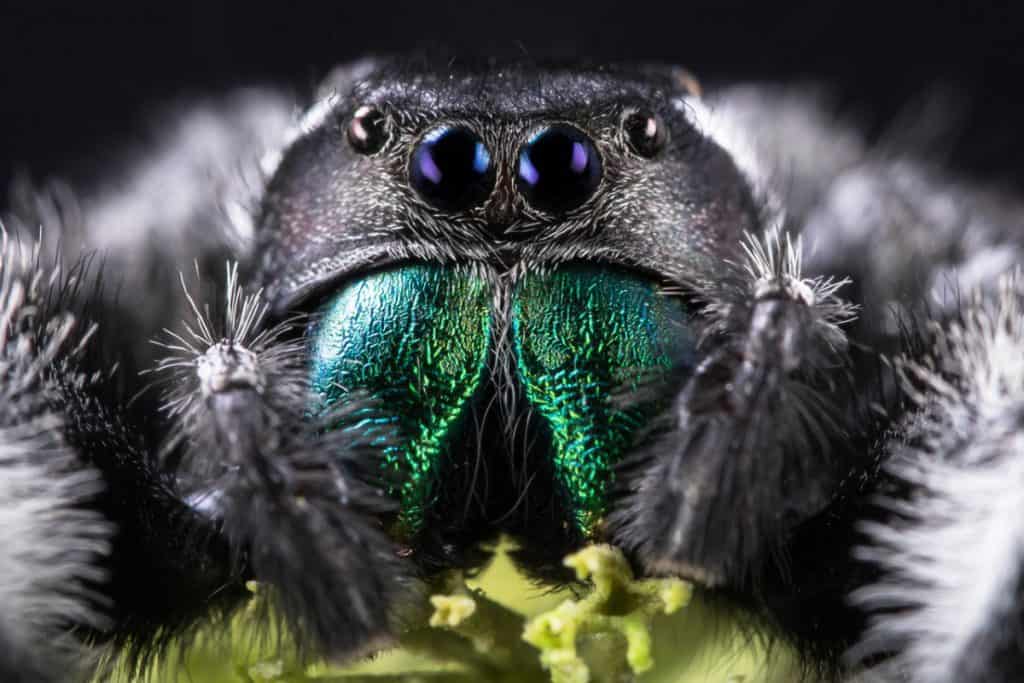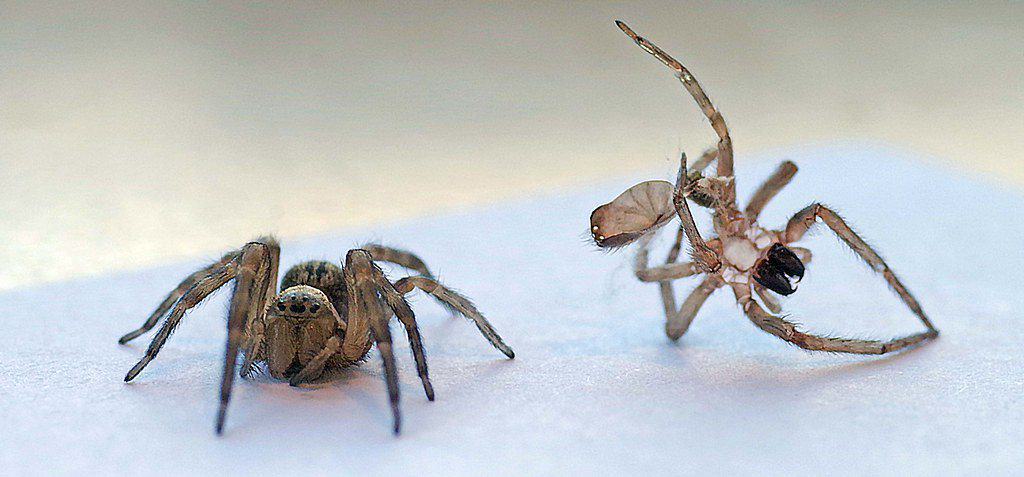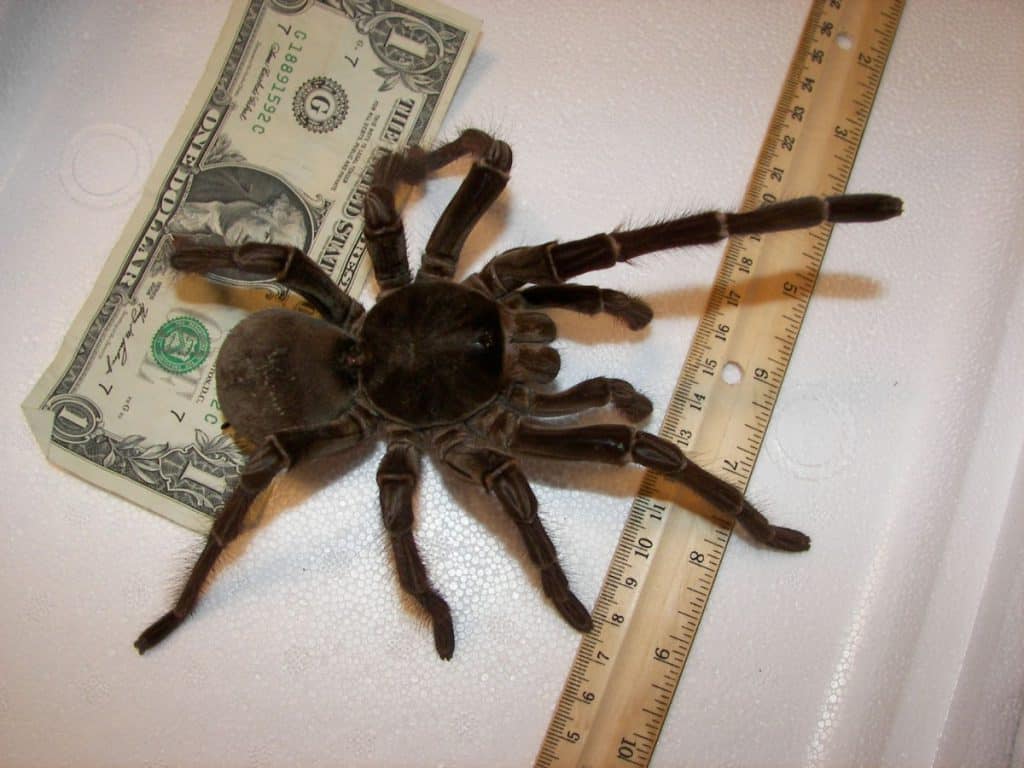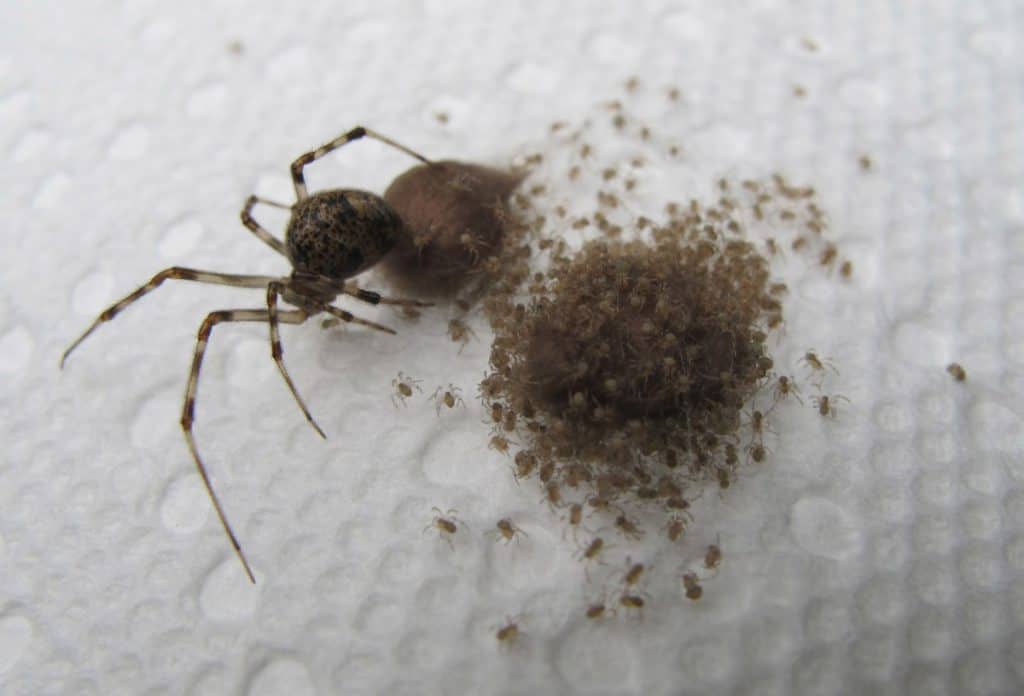
If you enjoy reading this article, why not check out our articles on When is Spider Season? The Quick Answer and Should You Kill Spiders? Short Answer No
How Small Can Spiders Get?
Of all the small animals in the world, spiders are perhaps the most fascinating. Or, for some people, the most terrifying. Some people hate the idea that spiders can climb around unnoticed due to their size. This raises the question, just how small can spiders get?
The smallest species of spider discovered only grows 0.37mm (0.014 inches) long. Though you don’t need a microscope, you’ll have to strain your eyes to be able to see them. And even if you do, all you’ll see is a speck of a spider.
To make things better (or worse), scientists believe there are even smaller spiders out there. They believe that they are yet to discover the smallest of these small creatures. But as they search, why don’t we have a closer look at the things already known?
The Smallest Known Spider
To clear things up, the smallest known spider, the Patu Dingua, is only found in the jungles of South America. You won’t find this critter lurking in the corners of your house. What you’ll find there instead is the common house spider. While these spiders are also small, their body size grows from 4mm-9mm (.16-.24 in.). That’s enormous compared to the Patu Dingua.
The Patu Dingua’s claim as the smallest spider is not undisputed. Even the Guinness Book of World Records doesn’t give them this crown. Instead, it gives this crown to the entire symphytognathidae family of spiders. This family includes the Samoan moss spider, the Frade cave spider, and, of course, the Patu Dingua.
Of all those competing for the title, the Frade cave spider is the biggest (or should we say, smallest) threat to the Patu Dingua. This is because only female Frade cave spiders have been discovered. The males are nowhere to be found. And if you know anything about spiders, you know that the males are usually a lot smaller.
This is why until someone finds those missing males, we don’t know exactly how small these spiders can get. And it may take a while. Frade cave spiders are critically endangered, meaning there aren’t many of them alive. They’re also only found in the deep Frade cave system on the coast of Portugal. This is why getting to them is very hard.
It can also be fun to think that the males haven’t been discovered because they’re too small to see. But we can’t be sure. For now, the .37mm Patu Dingua is the smallest spider in the world.
Why Are Males Smaller than Females?
For most animals, the males are bigger than females. You can even observe this in humans. The average man is a lot taller than the average woman. But in the world of spiders, things are different. In some species of spiders, the males can be over 10 times smaller than the females. And they always weigh a lot less.
This has baffled scientists for a long time already. And today, there’s no proven answer. That said, there are a lot of theories and studies done on this topic. It could very well be a combination of several things.
Charles Darwin suspected that males were smaller so they could get away faster. In many species, the female tries to eat the male after mating. That’s why males often have to run for their lives. And a smaller sizes to allows them to escape before being devoured.
“ In many species, the female tries to eat the male after mating. That’s why males often have to run for their lives.“
Another theory states that females are much larger because of their role in producing offspring. Female spiders can lay thousands of eggs in their lifetime, and hundreds of eggs at a time. That’s why they’re going to need all the energy they can for this. This is also why plenty of females try to eat their mates if they can.
One of the most well-studied theories for the size difference, though, has to do with bridging. Male spiders are roamers. They spend their lives traveling in search of mates. To help them travel, males use their silk to bridge from one point to another. This makes the journey faster and gets them to females in no time.
In several tests, scientists found that smaller males had a much easier time bridging. When the wind blows, larger males struggle to get where they’re going, but the small ones have no problem at all. This is why smaller males can get more mates than bigger ones.
So why are males smaller? It could be any one of these, or it could be all these. Whatever the case, it’s clear that being small is a big advantage for male spiders.
Curious about more differences between male and female spiders? Read through Do Male Spiders Spin Webs?
Why Are Spiders Small?
Compared to other animals, spiders are small. Even female spiders, who are a lot larger than males, are dwarves compared to other creatures. We only see monstrous spiders in movies, comic books, and art. It’s terrifying to imagine what spiders would be like if they were bigger. But have you ever wondered why there aren’t any gigantic spiders around? What stops them from becoming monsters?
It can be difficult to pinpoint exactly why certain animals don’t grow bigger. But for spiders, there are several reasons why they are never bigger than your hand. Let’s have a look at some of these.
For one, spiders have an exoskeleton. This means that instead of having bones inside of them, they have a hard outer covering. If spiders grew large, this exoskeleton would be very heavy. And without internal support, the outer covering wouldn’t be able to hold a giant spider up. This is why animals with exoskeletons never grow too large.

Photo by Maureen Pierre
https://hiveminer.com/Tags/exoskeleton%2Cspider
Another problem giant spiders would run into is breathing. The respiratory system of spiders is designed perfectly for its size. You can theorize that a bigger spider would have a bigger and better respiratory system to support it. But in reality, that just isn’t true. If you expand a spider and all its organs, its “lungs” won’t be able to keep up with the amount of oxygen it needs.
The entire behavior and lifestyle of spiders would also have to change. Being big and heavy means they’ll have to find food another way. They’ll be too heavy for their webs, and their webs will be too big to fool any insects. If ever they exist, giant spiders are likely to go extinct.
All in all, it’s just not possible for spiders to grow enormous. There are a lot of other complications that they’ll run into. Spiders are perfectly designed as the small animals we all know.
How Large Can Spiders Get?
Spiders can never get too large, but how large can they get?
The largest spider is the Goliath birdeater. As its name suggests, this spider is big enough to eat birds. Their bodies grow up to 12 centimeters (4.75 in.) long. That’s over 300 times bigger than the Patu Dingua! If you measure their leg span, they become even scarier. Their legs expand 28 centimeters (1 foot) long.
The largest spider is the Goliath birdeater… this spider is big enough to eat birds .

By Snakecollector – https://www.flickr.com/photos/8373783@N07/3200539228/, CC BY 2.0, https://commons.wikimedia.org/w/index.php?curid=6414045
Unless you have a pet Goliath birdeater, it’s unlikely you’ll ever come across one. They are found in the rainforests of South America. What you’re likely to come across is a giant house spider. If you see an unusually big spider hanging around your walls, that’s probably a giant house spider. These spiders can have leg spans up to 10cm (4 inches) long.
How much Space do Spiders Need?
If you have a pet spider, you should keep it in an enclosed area. This is to avoid it getting away and to prevent accidents. But it’s also very important to make sure you provide enough space.
The amount of space a spider needs depends on its size. Bigger spiders need more, while smaller spiders need less. A good rule of thumb is to provide 2-3 times more space than your spider’s leg span. This ensures that it has enough space to move around. Of course, you could provide more. But never give less than this amount of space.
It’s also important to know which species of spider you have. Some spiders like hanging out in webs, while others are ground spiders. If you have a weaver spider, getting a tall enclosure allows them to build the webs they want. But if you have a ground spider, such as a tarantula, this can be very dangerous. Tarantulas can seriously hurt themselves if they fall from high places.
How Small Are Baby Spiders?
Have you ever seen a spider egg hatch before? It’s one of the most fascinating things to watch as hundreds upon hundreds of spiderlings emerge. It can also be a very pesky thing to deal with as a homeowner.

http://squirrelsview.blogspot.com/2010/11/spider-egg-sacs.html
If you see a teeny-tiny spider in your house, it’s probably a baby spider. Though the size varies from species to species, most baby spiders are only around 1mm long. But they aren’t easy to miss. This is because they are often clumped together in one place.
Spiderlings are pretty amazing! We talk about them more in our article How Many Spiderlings Can A Spider Have?
Sources:
Scienceworld dot ca /why-arent-spiders-bigger
Guinnessworldrecords dot com /world-records/smallest-spider/
wired dot com /2009/11/spiders-gallery/
livescience dot com /9995-size-matters-spiders-smaller-males-advantages.html
If you enjoyed reading this article, why not check out our articles on Where do Wolf Spiders Go in the Winter? and Do Spiders Hibernate? Let’s Find Out
Recent Posts
Tiny Black Bugs in Bathroom NO WINGS: What They Are and What to Do!
Finding tiny black bugs in your bathroom can be uncomfortable, to say the least. Especially if they are persistent, or they appear in very large numbers, which they often like to do. When it...
Tiny Black Bugs in Plant Soil - What Are They & What To Do About It
A short horror story: You get a new houseplant. You do your best to take care of it. You’ve ensured that it has the right soil, the right amount of sun, it gets enough water. And then one day, you...

